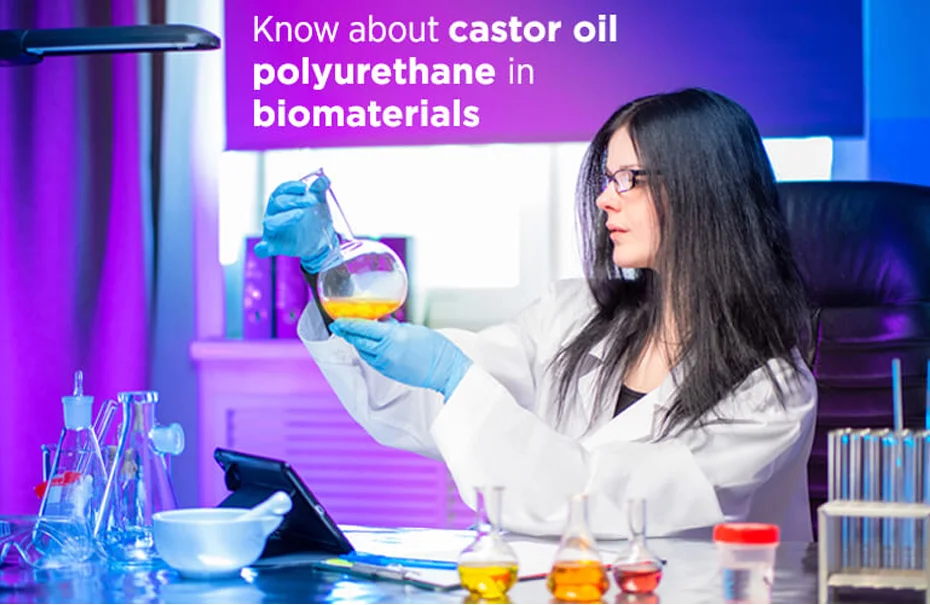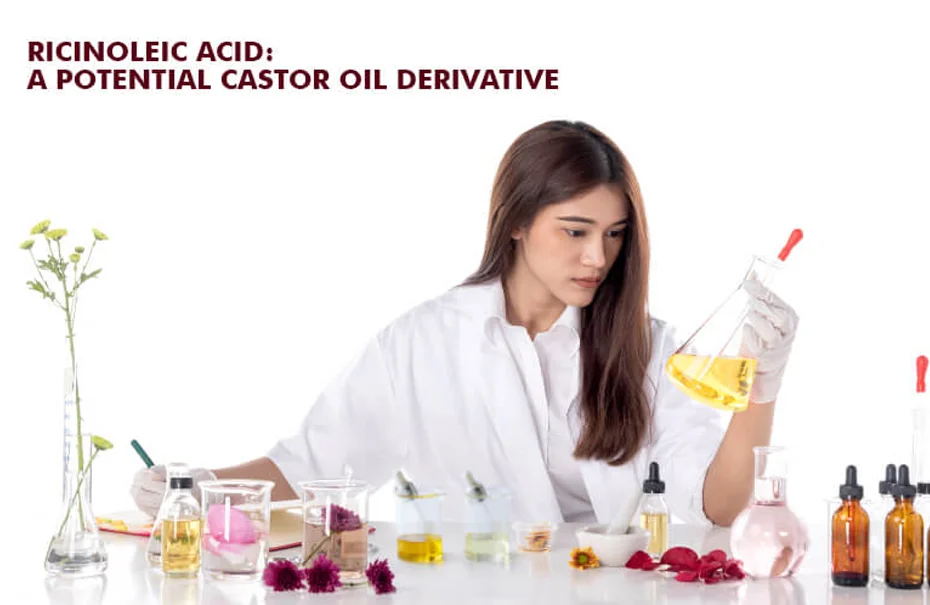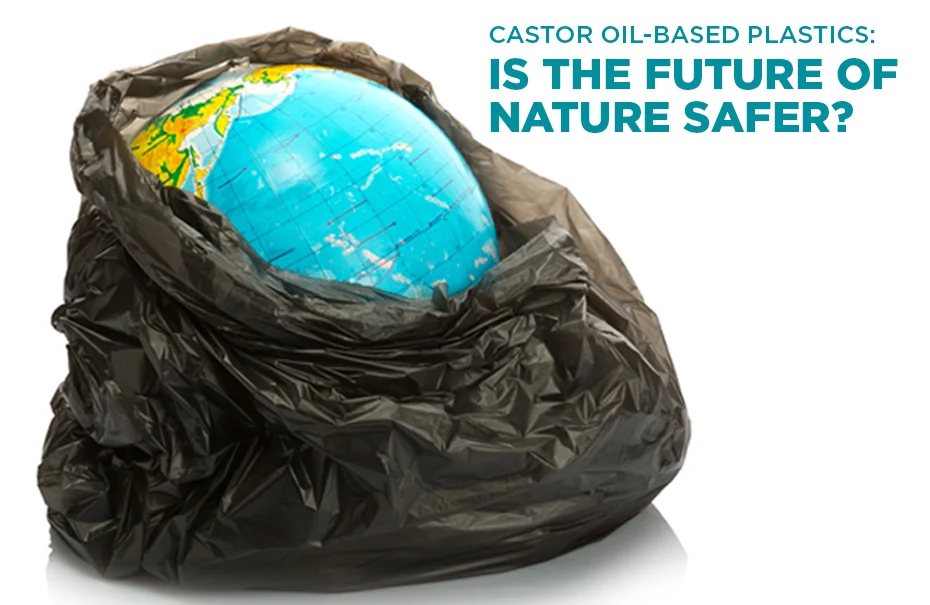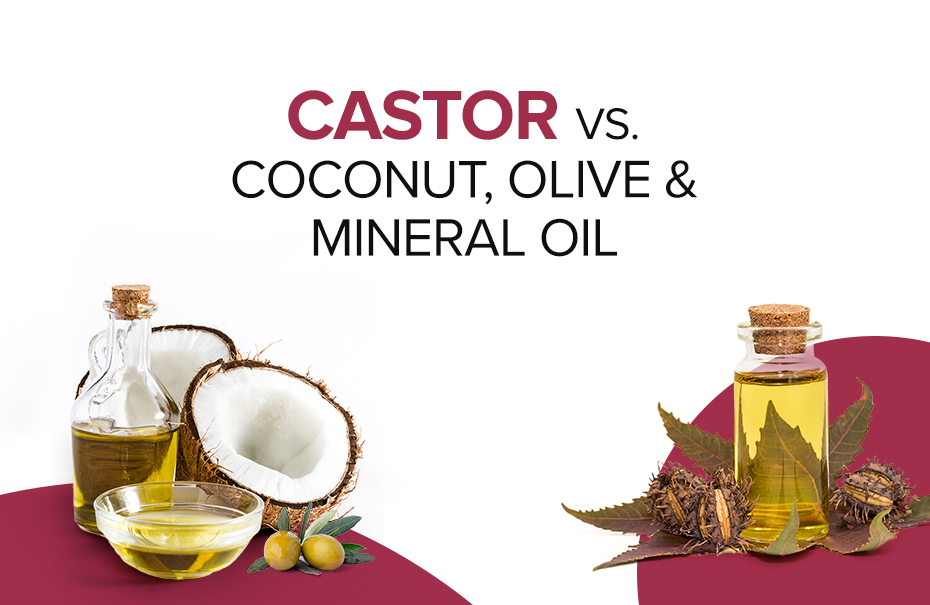Know about castor oil polyurethane in biomaterials

Medical uses of polyurethane, found in castor oil have significantly contributed to the healthcare system. Its effectiveness and quality cannot be questioned in this regard. Applications like sutures, nasogastric catheter, wound dressing and insulation of electronic pace-maker are readily available in global markets. Now, the properties of polyurethane like chemical and thermal stability, lower degradation rate and mechanical performance make castor oil derivatives outstanding in the medical field. In the recent past, castor oil, the polyol source has been established as environment friendly.
In this blog, we will talk about polyurethane application in the medicine domain. We will review the castor oil derivative, its chemical modification, the processing technique and application in tissue-engineering. Also, we will cast light on how medical devices are made with the aim of understanding current situations, challenges & limitations from the standpoint of polyurethane.
Interesting facts about polyurethane
Polyurethane is amongst the important classes of polymers being used in a plethora of applications. This special group of heterogen-polymers can be characterized by the presence of urethane-groups – ester of carbamanic acid.
Polyurethane contains polymers having plurality of urethane group in its molecular structure. This is regardless of the chemical composition in the rest of the chain. Polyurethane may be containing aromatic and aliphatic hydro-carbons, ethers, esters urea, amides or isocyanate groups.
The medical applications of polyurethane have been identified back in 1965. It is versatile in use owing to its rigidity, flexibility, biocompatibility, abrasion resistance and so forth. Polyurethane is identified to resist gamma-radiation, oils, acids and bases.
These important properties make this polymer the important element in the medical arena.
Some more properties of polyurethane
Current researches focus on its biodegradable properties for tissue engineering and resorbable implant. Polyurethane has a design requirement of biocompatible monomers. It also requires bioactivity, mechanical response, apt degradation rate etc.
The structure-property relationship remains strong in this case. This very characteristic feature allows modifications in the structure to accommodate biodegradable & cell-response linkage.
Owing to the above-mentioned properties, pure castor oil has established itself as an outstanding hydrophobic monomer. Ninety percent of castor oil comprises ricinoleic acid. The presence of it makes the synthesis much easier. Its elastomeric behavior & mechanical properties mimic tissue performances.
The chemistry of polyurethane
Chemistry of polyurethane is such that it makes reaction of isocyanates with any hydrogen-accommodating compound easy.
It is fairly justified to synthesize urethane by different methods. The popular reaction between alcohol and isocyanate is rampant. This possibility was first established back in 1849 by Wurtz.
Like we mentioned earlier, polyurethane is a very versatile group. Its cross-linking density and stiffness are worth mentioning. Polyurethanes can be divided into two broad categories – elastic polyurethane & rigid polyurethane. This very classification is based on its polyol structure. The molecular weight & polyol functionality are important for its structure arrangement.
The higher molecular weight produces elastic polyurethane. And, the lower molecular weight gives way to cross-linked rigid polyurethane.
The urethane group generates hydrogen bonds. This is a very hard segment. This enhancement in functionality boosts hydrogen-bound interactions. This, in turn, reduces soft-segment mobility, and also reduces polymeric flexibility.
How can polyurethane be obtained?
Polyurethane can be obtained mixing di-isocyanate with the liquid diol or polyols with fixed NCO ratios, all casted in the mold. Isocyanate terminated pre-polymer could be prepared mixing any excess of di-isocyanate. This further adds to the low-molecular weight factor. And, the molecule is termed as chain-extender.
Let’s discuss the kinds of polyols
Polyol – They’re actually reactive substances. They do contain a minimum of two reactive groups. The compound is amine-terminated. Now, let us talk about the 4 kinds of polyols.
- Polyether polyol – It is an end result of the reaction between a molecule called initiator & an alkaline oxide. The amine-terminated polyether’s functionality depends on the simple molecule, initiator.
- Polyester polyol – These are structures of glycol ester. They’re mostly prepared by condensation of alkylene-glycol. Vegetable oil based polyol can be included in this mentioned category.
- Polycarbonates – They’re mostly obtained by the condensation of alkylene glycol-carbonates. This very chemistry is restricted to make sure that the end-product contains terminated hydroxyl group. Polycarbonate based polyol is rather characterized by high polarity giving way to great mechanical properties. The stability towards oxidative and hydrolytic-biodegradation has been sensed. On the flip side, the cost of production of polycarbonates remains high.
- Isocyanate – Isocyanate is highly reactive. This functional group has a diverse range of applications. Chemical isocyanates accommodate cycloaliphatic, aromatic, araliphatic & heterocyclic poly-isocyanates.
The other components are – chain extenders, or catalysts that are of immense importance too.
Castor oil polyol
Castor oil is derived from seeds of Ricinus Communis family. It comprises ricinoleic triglyceride which is a naturally occurring component with hydroxyl group at its base. The abundance of castor oil isn’t harmful at all. It is rather environment friendly to the core.
The polyurethane structure is largely elastic in nature. The flexibility is due to longer fatty-acid chains.
This, in turn, makes it a compound with excellent thermosetting properties.
Medical applications
Polyurethanes have contributed largely to the medical arena. Tissue and organ engineering or resorbable implant really outperformed in the medical field.
In this natural castor oil context, several functions such as bone tissue engineering and wound healing are under the lens.
Reaching the adequate biodegradation rate remains important. For this antimicrobial activity, cell viability and proliferation techniques are being used.
Conclusion
In this blog, we tried to understand the versatility of polymers. And, we discussed their importance in biomaterial commercial production. Castor oil based polyurethane gave way to several innovations in the biomedical domain. Bone tissue engineering and wound healing are especially important. Castor oil can be put to several uses. The derivative, polyurethane has shown miraculous results in the medical arena, to say the least.



